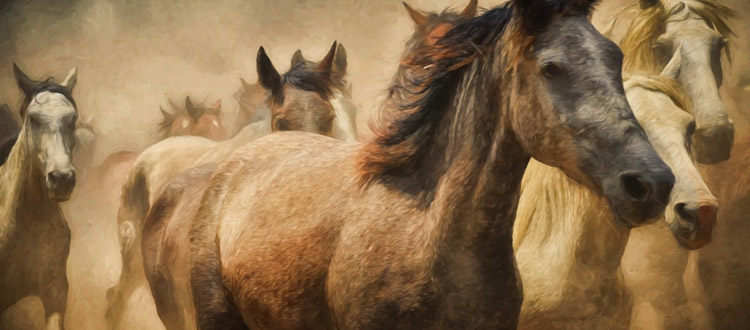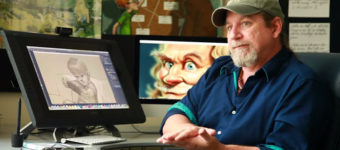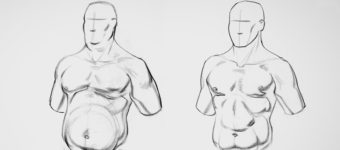
Best Books On Drawing Horses
Artists frequently bemoan the difficulty of drawing horses. This single animal is used so often in animation, concept art, illustration, and all forms of entertainment art.
Yet it’s also one of the trickiest creatures to get right from anatomy and structure to locomotion.
Thankfully there are tons of books out there to help you approach this difficult subject, so if you’re willing to put in some work you’ll be a master of horses in no time.
The Art of Drawing & Painting Horses


This is a surprisingly simple guide that takes drawing into a step-by-step process. Some artists like this style, others don’t. Depends how you learn best.
The Art of Drawing & Painting Horses spans 144 pages with individual guides covering horses from varying angles and in mid-stride. You’ll get plenty of references for dozens of different horse breeds so you can really see the differences.
Each chapter covers a different medium so you’ll move through drawing into painting with oil, watercolor, acrylic, and pastels. This is one more reason why general artists may not find this book super valuable.
But I still recommend this book mostly based on how much detail it covers. Learning to draw is always about detail and observation.
By following these exercises you’ll train yourself to focus on the details before putting anything down onto the page. It’s something you’ll always work to improve and it’s crucial for learning any new subject matter.
The Horse Anatomy Workbook


Perhaps the toughest part of drawing a horse is understanding why it… is. Why do horses walk/run the way they do? How do their joints and bones connect to make them look like they do?
The Horse Anatomy Workbook answers all of these questions plus a whole lot more with an in-depth look at horse aesthetics. This is the ultimate guide to equine anatomy and structure from the ground-up.
Technically this book is a scientific reference but it’s really for anyone studying horses. It works well for artists who want to truly understand the subject they’re studying.
The book is full of illustrations which visually pack a real punch. You can’t read through this book and not take something away.
In fact I’d say this is one of those books you’ll constantly reference during your work since it’s so thorough and accurate. Perfect for artists of all skill levels.
Drawing and Painting Horses


Artist Alison Wilson published Drawing and Painting Horses a few years ago as a reference guide for professionals. I still think it’s one of the better books on this subject and the writing style is superb.
The two primary mediums he covers are drawing(graphite) and oil painting. These are generally the most common choices for artists regardless of background, so it’s a very generalized book for a broad audience.
Alison covers a lot of anatomy along with locomotion and the gait of a horse. The three typical gaits are the walk, trot, and gallop, all of which you’ll learn about in this book.
This really is an excellent guide for all artists because it goes into so much detail on so many related topics. You’ll come out the other side an expert on horses and how to draw them well.
Force: Animal Drawing


I’ve worked through a few of Mike Mattesi’s books and he has a way with explaining things that just makes sense. He has a book series called “Force” which offers guidelines for animators who want to capture accurate motion from life.
Force: Animal Drawing offers 220+ pages of resources on all motion for animals. This book goes beyond horses covering the three types of animal species by movement: plantigrades, digitigrades, and unguligrades(which includes horses).
Don’t worry if these terms sound foreign. They merely explain the walk cycle of each animal and they organize creatures into different locomotion groups. This makes your job easier as an artist/animator because you can apply these lessons to all the animals you study.
The section on horses covers 20 pages so it’s a pretty lengthy topic in this book(about 10% of the whole thing!). But I primarily recommend this book for animators or anyone looking to create realistic horses in motion.
This may not be as useful for concept artists or illustrators unless you focus a lot on action poses. And even then you might find more value in my collection of creature art books.
Draw and Paint Realistic Horses


Realism is the gateway to high-grade concept art. All great concept artists study realism to make their designs more believable.
Draw and Paint Realistic Horses offers a deeper look into the realist perspective on copying horses from life. The author Jeanne Filler Scott teaches you how to capture animals with grace and create a scene that feels shockingly believable.
Each chapter delves into something different with a total of 12 unique projects in this book.
You’ll work through lessons that focus on drawing, oil painting, and some acrylic work too. Some of these raw painting exercises can be transcribed into digital painting with experimentation.
But the exercises themselves are very practical covering various anatomical details and outer-layer rendering for the horse’s coat, mane, and facial structure.
Horses & Ponies


Horses & Ponies is part of the “Drawing Made Easy” series that attempts to simplify the drawing experience. This one is only 64 pages but it pushes some very crucial ideas for beginners.
These types of books don’t always focus on the best practices for detailed art. But these books can help build your confidence if you’re brand new to art, even if you never did any drawing from a young age.
Starting from scratch can be intimidating and I think this book offers a nice starting point. You’ll learn how to collect the right drawing materials, follow certain techniques, and how to apply fundamentals to your work.
All of this is crammed into a fairly small book that should feel the complete opposite of intimidating.
For a complete beginner this is pretty nice. But for artists with any sort of experience I’d pass on this title.
Draw Horses With Sam Savitt


Right off the bat I should say this book is pretty old. It dates back to the early ‘90s and hasn’t been updated since.
But Draw Horses With Sam Savitt is still a very practical guide to understanding horse anatomy and drawing techniques.
It’s only about 100 pages long but the tips and techniques are priceless. Sam has a way of explaining things through words and visuals that can really leave an impact on your work. Plus these exercises get very thorough and really force you to dig into how horses operate.
Plenty of sketches, diagrams, and photos to go around, all of which are explained by author & artist Sam Savitt. A must-have resource for anyone struggling with horses in their artwork.
CP Horses: A Complete Guide to Drawing Horses in Colored Pencil


Anyone who loves dry mediums will adore colored pencils. The drawing techniques from colored pencil apply to your B&W pencil sketches along with your digital drawing work.
CP Horses: A Complete Guide to Drawing Horses in Colored Pencil should be the only resource you need for mastering horses in pencil. The book is very thorough and it looks into detailed rendering more than any other book.
You’ll find a lot of individual lessons on drawing horse tails, manes, hoofs, eyes, and similar structures.
But you’ll also learn how to properly see what you’re drawing to capture horses from any angle with any reference.
These techniques are so valuable to artists because pencil is the universal medium. So even if you don’t typically use colored pencils this book will still help you make huge strides in your work.
All the books listed here are well worth reading but they each target varying skill levels. Once you know what you’re looking for you’ll have a much easier time finding the best learning materials for your needs.
Either way I recommend The Horse Anatomy Workbook for pretty much anyone serious about drawing horses. It’s something that can sit on your shelf for years and still prove useful as a reference.












